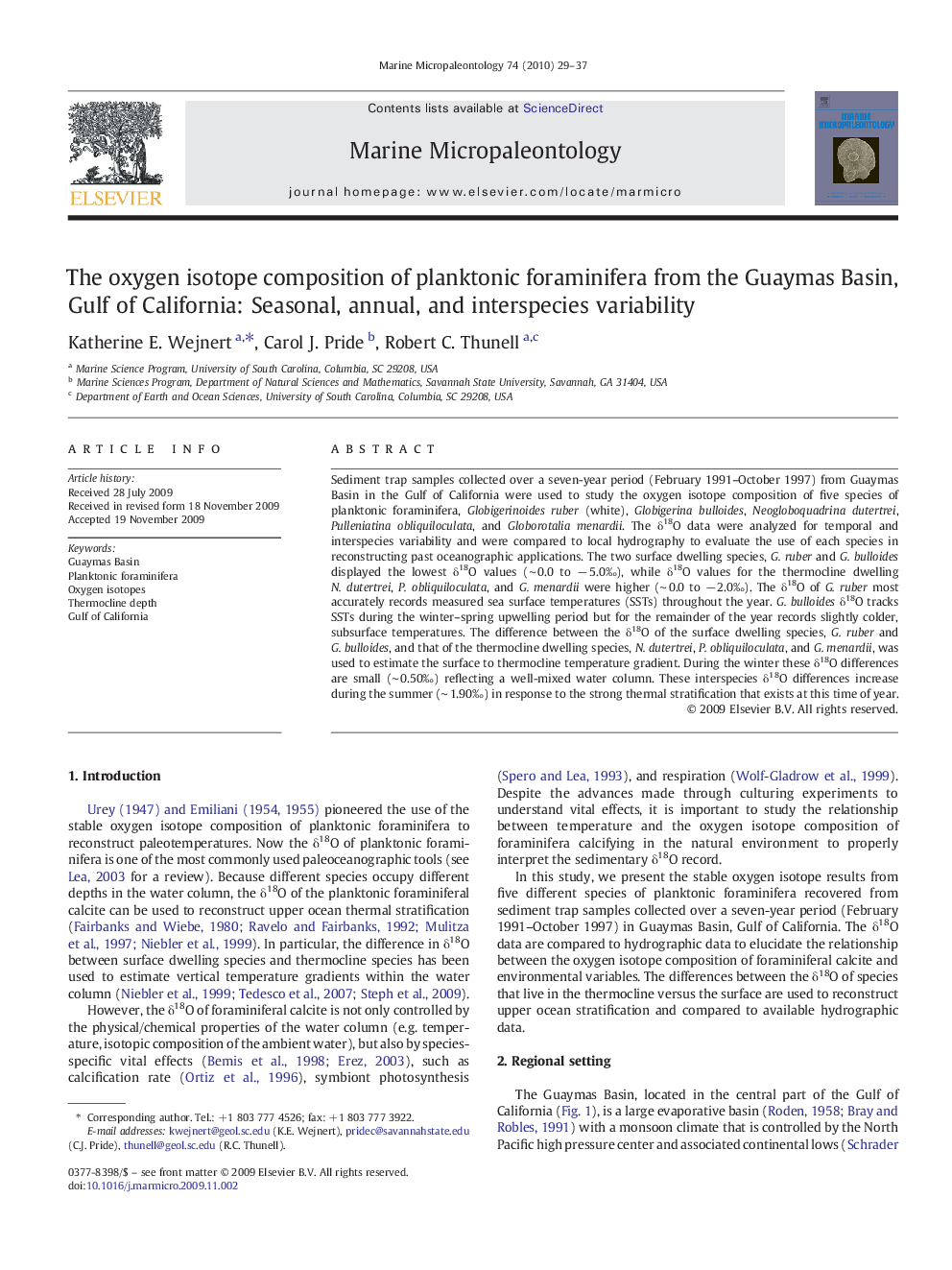| Article ID | Journal | Published Year | Pages | File Type |
|---|---|---|---|---|
| 4749167 | Marine Micropaleontology | 2010 | 9 Pages |
Sediment trap samples collected over a seven-year period (February 1991–October 1997) from Guaymas Basin in the Gulf of California were used to study the oxygen isotope composition of five species of planktonic foraminifera, Globigerinoides ruber (white), Globigerina bulloides, Neogloboquadrina dutertrei, Pulleniatina obliquiloculata, and Globorotalia menardii. The δ18O data were analyzed for temporal and interspecies variability and were compared to local hydrography to evaluate the use of each species in reconstructing past oceanographic applications. The two surface dwelling species, G. ruber and G. bulloides displayed the lowest δ18O values (∼ 0.0 to − 5.0‰), while δ18O values for the thermocline dwelling N. dutertrei, P. obliquiloculata, and G. menardii were higher (∼ 0.0 to − 2.0‰). The δ18O of G. ruber most accurately records measured sea surface temperatures (SSTs) throughout the year. G.bulloides δ18O tracks SSTs during the winter–spring upwelling period but for the remainder of the year records slightly colder, subsurface temperatures. The difference between the δ18O of the surface dwelling species, G. ruber and G. bulloides, and that of the thermocline dwelling species, N. dutertrei, P. obliquiloculata, and G. menardii, was used to estimate the surface to thermocline temperature gradient. During the winter these δ18O differences are small (∼ 0.50‰) reflecting a well-mixed water column. These interspecies δ18O differences increase during the summer (∼ 1.90‰) in response to the strong thermal stratification that exists at this time of year.
